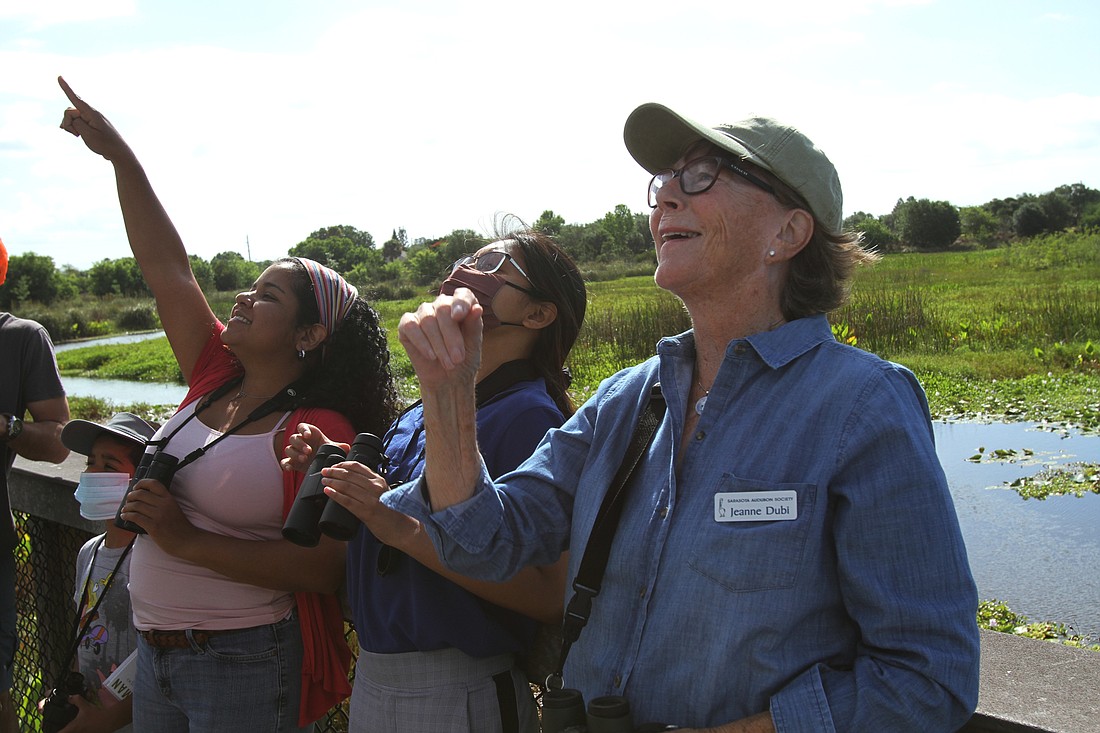- April 25, 2024
-
-
Loading

Loading

Celery Fields is busy as can be on a Saturday morning.
The hills and marshes are filled with children running and playing, couples walking their dogs, and athletes training. It’s a veritable flurry of activity enough to distract anyone.
But Sarasota Audubon Society education chair Kathryn Young isn’t worried about any of that — she’s too busy looking up.
Young and president Jeanne Dubi have been observing the world’s birds for years, and they spend their time sharing that knowledge with others.
The organization — based out of the nature center at Celery Fields – spends much of the year hosting guided tours, workshops, classes, and meetings to inform and encourage Sarasotans about bird watching. It's a hobby that has taken them across the country and world exploring natural vistas and scenic environments in the hopes of seeing a new species.
"It's a secret that people don't know about," Young said. "People think bird watching is old ladies sitting and watching their feeders ... you should see these competitive birders."
Young became involved in the hobby after noticing birds on her walks. She picked up a field guide, found Audubon, and started accompanying volunteers on tours through various nature spots in Sarasota. Every time she returned from a trip she would read up on two or three new birds in her guide and would repeat that process for months.
She says it’s a hobby that benefits from in-person experience and repetition. It’s one thing to look through bird types with a guide but it’s another to be in nature and seeing the mix of birds flying up close.
“Field trips are really the way to really learn about birds,” Young said. “Go with someone who knows birds.”
The organization relies on volunteers and has around 50 bird enthusiasts helping run things during the season before taking a pause during the summer. The center typically has a pair of docents managing the Audubon Nature Center building at Celery Fields along with two experienced birdwatchers at the boardwalks. It’s from there that many fledgling and veteran birders alike can see a variety of species.
Young says in time she and other birders’ eyes are trained to focus on the smallest movement, the quickest rustle of leaves in the trees to see what kind of bird is present. Even as Dubi speaks to a group of families, her eyes are darting from bird to bird that fly past her.
Young says the summer is baby season where the year-round species pause to lay eggs and raise their young. She’s seen northern mockingbirds rustling for bugs to feed their chicks and other birds circling the swamp areas looking for food.
“There's 10,000 kinds of birds in the world,” Young said. “In North America, we have about 1,000 species. So everything changes, it's never the same.”
The society relies more and more on technology. It’s fitting that a hobby that’s so detail- and classification-oriented has a lively internet community who upload their various photos and notes of birds and where they can be found into an internet database.
Dubi and Young check the website and birding apps for what’s popular at the time and then make trips themselves to see what they find. Moreso than just tipping them off about the current trends and migration patterns for different species, Young says the internet has really helped provide them with a greater sense of community.
They have their white whales — or birds, as it were — that they’ve still yet to see in person. These “life birds” have eluded Dubi and Young for years, and are found all across the country.
The summer season is close at hand and the bird watching group will soon close its nature center and pause its activities beyond Zoom meetings to wait for the snowbirds to return this fall. Both Dubi and Young will take time to recharge, plan new birding activities, and prepare for a new season. They’re also going to take time and look for birds they haven’t seen yet — there’s always something new to see.